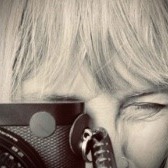Lens recognition M262
-
Recently Browsing 0 members
- No registered users viewing this page.
-
Similar Content
-
- 4 replies
- 313 views
-
- 2,767 replies
- 324,413 views
-
- 3 replies
- 409 views
-
- 9 replies
- 507 views
-
First SL lens
By Orson,
- 9 replies
- 505 views
-





Recommended Posts
Join the conversation
You can post now and register later. If you have an account, sign in now to post with your account.
Note: Your post will require moderator approval before it will be visible.